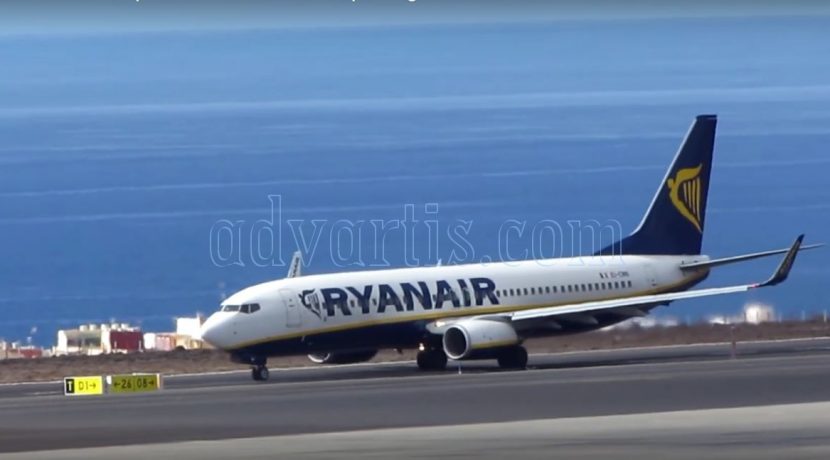The Canary Islands is the Autonomous Community in which the air traffic between the low cost has grown the most in the first eight months of the year 2017 with a rise of 23.1%, compared to the same period of the previous year, to over 4 million of passengers, according to data released today by the General Subdirectorate of Knowledge and Tourist Studies, under the Ministry of Energy, Tourism and Digital Agenda.
The archipelago has a market share of 12.8%, and among traditional companies, there has been a slight decrease from 0.2% in the year to 5.3 million passengers.
Only in August 2017, the Canaries also led the rise of the low cost with a rise of 20.9% to just over 540,000 passengers.
In Spain, low-cost airlines transported 31.4 million passengers from January to August, a 14.4% increase over the same period in 2016.
On the other hand, traditional airlines transferred more than 28.5 million passengers in the first eight months of the year, 3.9% more than the same period last year, out of a total of 60 million international travelers arriving by plane from January to August, 9.2% more than a year earlier.
In this way, the low-cost and traditional carriers were distributed in 52.5% and 47.5%, respectively, passenger air traffic in the first eight months of the year.
In August, the low cost carriers carried 5.2 million passengers, 11.9% more than in the same month of the previous year, capturing 53% of the air traffic, while the traditional ones moved to 4.6 million of passengers, 0.9% more than in the same month of 2016, with 47% of the total flow.
Among low-cost airlines, Ryanair, easyJet and Vueling continue to lead the ranking, concentrating 64% of the volume of low cost passengers and 33.9% of total international air traffic in Spain. The first two showed notable gains in August, while Vueling declined moderately.
From January to August, the main countries that sent international passengers to Spain showed a remarkable growth that benefited in almost all the communities. 80.2% of total air luxury came from the EU, experiencing an increase of 8.8%.
UNITED KINGDOM AND ITALY, MAIN MARKETS
United Kingdom, with 11.7 million passengers, 37.2% of the total, led the low-cost arrivals to Spain until August, after a 16.1% increase; followed by Italy, with 11.5% of the entries by this route, up to 3.6 million travelers, 11.1% more, and Germany, with 11.3% of the total, and 3.5 million travelers in ‘low cost’, 18% more.
France, the fourth issuing market, with 8.1% of all low-cost passengers, increased its travelers from January to August by 8.3% to 2.5 million.
It was followed by the Netherlands with 1.9 million passengers in low-cost carriers, which is 16.8% more than in the first eight months of 2016, with 6.3% of the total.
Switzerland occupies the following position, with 931,511 passengers up to August, 8.5% more, followed by Ireland and Switzerland, with 910,000 (+ 5.2%) and 904,101 (6.4%) passengers, respectively.
The rest of the Nordic countries recorded notable increases in the first eight months of the year, with a 9.6% increase in passengers arriving from Denmark and 18% more passengers from Sweden, ranking as the ninth and eighth respectively.
GRAN CANARIA ACCUMULATES HIGHER INCREASE
Barcelona-El Prat airport accounted for 24% of all low-cost travelers, with growth of 7.3% and more than 7.5 million passengers, leading passenger arrivals to Spain in this way.
It was followed by Málaga-Costa del Sol, with 12% of the total and 13.9% more arrivals at low cost, to 3.7 million passengers, and Palma de Mallorca, which captured 11.7% % flow at low cost, transporting more than three and a half million passengers, which represents a 7.2% increase compared to the same period in 2015.
In fourth place was the airport of Alicante, with 3.48 million passengers of low cost, 15.1% more, and 11.1% of the total.
In fifth position, with 3,42 million low-cost passengers, 12.7% more, Adolfo Suárez Madrid-Barajas airport was located, which received 10.9% of the total.
Next, Palma de Mallorca received a total of 3.02 million passengers in low-cost carriers in the first eight months of the year, an increase of 16.1%, which represents 11% of the total.
Gran Canaria was the airport that increased its passengers more than the first eight months of the previous year (+ 27.3%) in low cost, with 956,662 passengers, 3% of the total. For its part, Palma increased its passengers by this route in 22.2%, Tenerife South Airport (+ 19.7%) and Valencia (+ 18.7%). No aerodrome experiences falls in the number of passengers arriving by this route.



